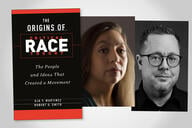You have /5 articles left.
Sign up for a free account or log in.
In a session at the 2011 Educause conference in October, Bradley Wheeler, the chief information officer at Indiana University, issued a challenge to his colleagues. Unless universities assert their power as customers, the vendors that sell them products and services will continue squeezing those institutions for cash while dictating the terms under which they go digital.
That conversation revolved around expensive, institution-level investments such as learning-management platforms and enterprise resource planning software. Now Wheeler and his colleagues are looking to apply the same principles of “aggregated demand” to help students save money on electronic textbooks.
Internet2, a consortium of 221 colleges and universities, which last year brokered landmark deals with Box.com and Hewlett-Packard that gave its members discounts on cloud computing services, announced today that it had entered into a contract with McGraw-Hill, a major textbook publisher, aimed at creating similar discounts for students on digital course materials.
Students have less ability than universities to pool their power as consumers, says Wheeler. The ascendance of e-textbooks means, among other things, that the secondary market for used books -- the one area where students can exercise power over textbook pricing -- could soon disappear.
Universities would do well by their students to exercise leverage on their students’ behalf, Wheeler says. “If somebody [does not] speak up for students in the move from print to digital, the students [are] going to get killed,” he says.
Beginning this month, five major universities — the University of Wisconsin at Madison, the University of Minnesota-Twin Cities, the University of Virginia, Cornell University, and the University of California at Berkeley -- will start a pilot program in which certain courses will use only electronic texts. The texts will be available via Courseload, a device-agnostic platform that will integrate with the universities’ learning-management platforms (LMS). If students respond favorably to the pilots at those universities, other members of the consortium might wade in as well, says Dave Lambert, the CEO of Internet2. And as more universities sign on, their negotiating position with publishers stands to improve.
The consistency of having e-texts available on a single platform that works with any device and lives inside the LMS could be the catalyst for student acceptance of digital content that campus tech-watchers have been waiting for, says Michael McPherson, the deputy chief information officer at Virginia. “But even if it turns out that convenience and ease of access are not what turns people to e-texts,” McPherson says, the pilot will enable Virginia’s I.T. office to learn more about the legal and infrastructural realities of supporting a digital-content curriculum.
Virginia and the other four participating universities will subsidize the cost of digital materials during their pilots. But the long-term idea is that contracting with publishers to supply e-texts to all-digital classrooms at the administrative level will allow the universities to negotiate discounts that will save students money while allowing publishers to make more money.
If universities buy course materials on behalf of students, they can guarantee sales amounting to one e-textbook per student, every semester. Given students’ abiding preference for print textbooks, and the bustling used-book and rental markets that divert money away from new-book sales, publishers are willing to pay dearly for that kind of security, says Wheeler. That means discounts on each of those guaranteed sales that could drive down the cost of digital texts per student by nearly half, he says, while still increasing the per-sale margins for publishers.
Wheeler is not speculating idly. The pilots at Virginia, Minnesota, Wisconsin, Cornell and Berkeley are modeled after a program Indiana has had in place for more than two years. In that time, the university has collected data on student attitudes and spending habits.
Students opting to pay a flat fee for an e-textbook saved, on average, 5 percent more than did those who bought a used copy of the print book and then successfully sold it back to the campus bookstore, according to an early study of the experiment in 2009. A summary of the pilot, published last August, found that 60 percent of students preferred e-texts to print. That figure jumped to 68 percent among students who used e-texts for more than one semester, “suggesting that once students had more experience with e-textbooks, they were even more likely to prefer them,” according to the university.
The findings counter those a recent study of an e-text pilot at Daytona State College, which reflected unfavorably on both student attitudes and the purported savings promised by e-texts.
As Internet2 announced the e-text pilots it is facilitating at the five universities, Indiana University announced that it was expanding its trailblazing experiment into a full-blown program. In addition to McGraw-Hill, Wheeler and his team have negotiated agreements with Wiley & Sons; Bedford, Freeman and Worth; W.W. Norton & Company; and Flat World Knowledge.
The university has modeled its strategy after its negotiations for institution-wide deployments of software from Microsoft and Adobe. “We buy software from those guys at a brilliant price, because it’s a business-to-business relationship,” says Wheeler. “We took that same model to e-texts. Rather than the students buying at a retail price, we’ve negotiated a wholesale price.”
They negotiated some other perks as well. Instead of cutting off access to the e-texts after a semester or so, as they normally do, the textbook publishers have agreed to give Indiana students license to access the digital materials until they graduate. Students who wish to read their texts off a printed page, or simply wish to preserve a physical copy of a text after they graduate, will be permitted to print the full text without running afoul of the publishers’ copyright policies.
No professors will be forced to adopt an electronic text as the default medium for her course, says Wheeler. Students who want to stick with print will also be allowed to do so; they will still have to pay the fee for access to the digital text, but they will get a steep discount on a print copy, he says.
Wheeler, who has encouraged his colleagues to circulate their contracts with vendors when possible -- information-sharing being tantamount to negotiating as a bloc -- says that the publishers would prefer he not discuss the details of their contracts around e-texts. However, “Indiana is a Freedom of Information [Act] state,” he says, “and let’s just say our public information office has been doing a lot of printing lately.”
For the latest technology news and opinion from Inside Higher Ed, follow @IHEtech on Twitter.




